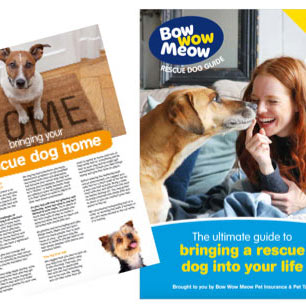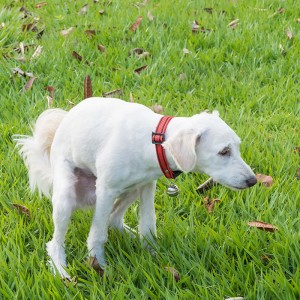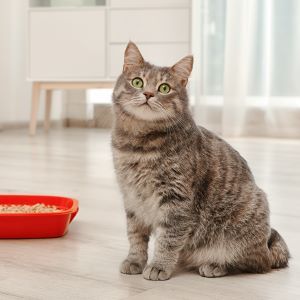Abnormal faeces in dogs and cats
What is abnormal faeces?
“Faeces” is a Latin word meaning ‘dregs’ or ‘sediment’ and is also known as poo, poop, excrement, stool, bowel movement, defecation, fecal matter and countless other names. All these terms refer to the body’s waste matter that is formed in the intestines and discharged through the anus. Waste matter is comprised mainly of water, undigested food matter, fats, bacteria, salts, minerals and other substances.
While there is a huge range of what is normal when it comes to faeces, being familiar with your dog’s or cat’s toileting habits can be beneficial for the ongoing monitoring of its health. It is important to be aware of both the frequency of bowel movements and what a typical stool looks like when the animal is healthy, so that any subtle variations in regularity or appearance of the faeces will be recognised. The smell of the faeces is another indicator of health; although an odour is normal, healthy faeces should not smell too foul.
Abnormal frequency or appearance of the faeces can be symptomatic of a number of underlying conditions, ranging from digestive disorders to liver or kidney disease to dietary sensitivities to parasites. This explains why veterinarians regularly take a stool sample for examination; important information not just about digestive health but the overall health of the animal can be attained by analysing the faeces.
When it comes to appearance, faeces have four main “C” characteristics: colour, content, consistency, and coating.
Colour
In a healthy animal, faeces should be chocolate brown, although colour can range from deep brown to tan, with small variations occurring as a result of diet, hydration and food colourings. For example, diets high in fibre will often produce a lighter-coloured stool.
If abnormal colours persist for more than two stools, consult the veterinarian. Abnormal stool colours include:
- Black or tar-coloured: may by a sign of bleeding in the upper digestive tract
- Red streaks: can indicate bleeding in the lower digestive tract
- Grey or yellow: may indicate issues with the pancreas, liver, or gallbladder
- Green: could indicate that the animal is eating grass, perhaps to soothe an upset stomach
- White spots: may be a sign of worms
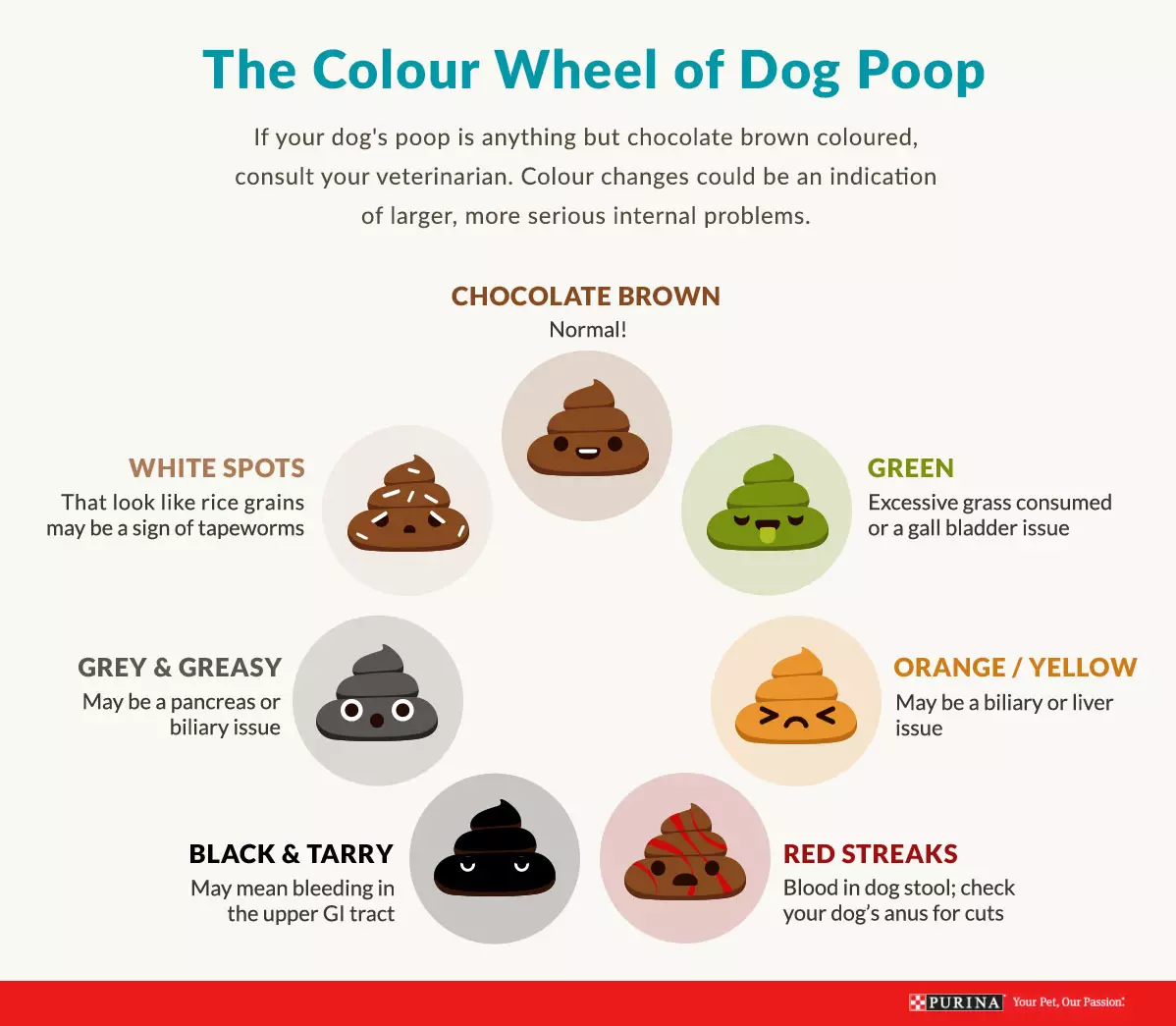
Source: https://www.purina.co.uk/dogs/health-and-nutrition/symptoms-to-watch-out-for/guide-to-dog-poop
Content
The content of faeces is assessed by microscopically examining a sample. Abnormal faecal content may include:
- Worms: long and skinny roundworms or little tapeworm segments, which are shiny, white, and about the size of rice and may possibly be moving.
- Foreign materials (pica, the eating of non-food items, is not uncommon in dogs and cats), such as:
- In dogs, grass, sock bits, plastic, rocks, cloth, and even money
- In cats, pieces of cat toys or other household items, such as thread or dental floss.
- Hair / fur: particularly in cats, big clumps of fur in the stool indicate overgrooming, which can occur as the result of stress, allergies, skin disease or even boredom. Hair is the most common item observed in the cat’s stool and is only considered abnormal if excessive quantities are present.
Coating
In a healthy animal, faeces should not have a coating or film over it. A coating may be observed as a trail on the ground after the stool is removed. A coating around the stool could indicate a condition such as bowel inflammation, or colitis. It often occurs in conjunction with diarrhoea.
Consistency
In a healthy animal, faeces should be well-formed, like play dough, i.e. not too hard or too soft or mushy. Ideally, it should be in log shapes with little segments in it so that if moved, it would break into smaller pieces.
The faecal scoring system is helpful in determining the consistency of the stool; the stool is graded from type 1 to type 7 or 8, where type 1 represents very hard, dry pellets and type 7 or 8 is liquid (see diagram below). According to this scale, the ideal stool has a score of 2. An overly hard stool can be painful to pass and may be a sign of dehydration, while an overly loose stool, or diarrhoea, can be a sign of an underlying disorder such as inflammatory bowel disease.
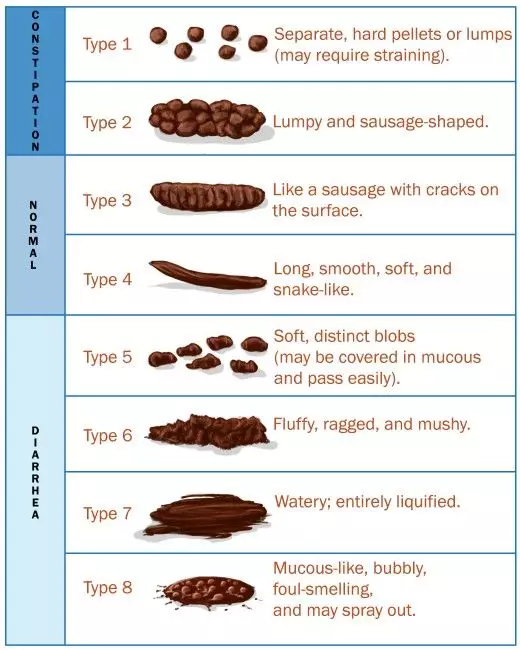
dog diarrhoea yellow; dog poop colour chart; dog poop chart; healthy dog poop chart;
cat poop colour chart
Source: https://i.pinimg.com/originals/f3/e7/46/f3e746b390478838f5accb87d21423ee.jpg
What is diarrhoea?
Diarrhoea is the rapid movement of ingested material through the intestine, resulting in one or more of the following:
- Increased frequency of bowel movements
- Loose, watery stools
- Increased amount of stool
Diarrhoea is not a disease but a symptom of many different conditions, from minor illnesses to serious or even life-threatening diseases. It is not uncommon for dogs and cats, and there are many reasons why an animal might have it. Puppies, kittens, small dogs, and older animals are at risk of dehydration after a single episode of severe diarrhoea.
Acute diarrhoea
When an episode of diarrhoea comes and goes within a day or two, it is referred to as acute. It often occurs after a change in diet, unusual motion such as long car trip or air travel, or as a response to anxiety or a stressful situation.
Chronic diarrhoea
When a dog or cat experiences diarrhoea on a regular basis over the course of two or more weeks, it is referred to as chronic. Chronic diarrhoea may indicate a number of potentially serious health issues, ranging from organ dysfunction to parasites to infection.
What is constipation?
Constipation occurs when an animal struggles to defecate or produces small, hard, dry pellets with great effort. Older dogs and cats are more likely to experience constipation, although it can happen to any breed at any age. Ongoing constipation in animals should not be ignored, as there could be a serious cause such as an intestinal blockage or an underlying kidney disease. Additionally, extended periods of constipation can cause serious health problems.
Diet and regular exercise have an impact on normal stool formation and movement through the GI tract. Animals that are overfed, or fed excessive low-quality dry kibble, may consume more fibre and filler than their digestive systems can process. The longer the animal excretes hard, dry faeces, or no faeces, the greater the likelihood that constipation will turn into obstipation. Obstipation – constipation that resists treatment – occurs when there is a backup of faeces in the colon, a condition which can lead to a potentially life-threatening intestinal blockage.
Symptoms of abnormal faeces in dogs and cats
The most obvious sign of abnormal faeces is the presence of diarrhoea or constipation.
The stool of an animal with diarrhoea may have one or more of the following characteristics (characteristics will vary depending on the cause):
- Watery, liquid, puddle-like consistency
- Soft, pudding-like consistency
- Soft, frothy consistency
- Greasy consistency (mucus in the stool)
- Black, tarry in colour (blood in the stool)
- Red in colour (blood in the stool)
- Pungent smell
- Increased volume of stool
- Increased frequency of bowel movements
- Straining to evacuate
Other symptoms that can occur along with diarrhoea include:
- Weight loss
- Vomiting
- Increased gas
- Fever
- Lethargy
- Malaise
- Loss of appetite
- Dehydration
- Abdominal pain
Symptoms of constipation include:
- Infrequent or no defecation
- Small, hard, dry pellets
- Thin, ribbon-like stool
- Straining or crying out in pain when trying to defecate
- Hard, dry, small stools, possibly with some mucous or blood
- Frequent trips to the litter box without producing a stool
- Loss of appetite
- Weight loss
- Lethargy
- Vomiting
Is my dog pooping blood? What does blood look like in my cat’s poop?
Haematochezia, or blood in the stool, can be a frightening sight for any pet owner. The colour of the blood can range from a vivid red to dark red. Bright red blood is usually more obvious to the naked eye. The brighter red it is, the more likely the source is lower down the digestive tract, in or near the colon.
Darker blood in the stool may not be as noticeable. It usually stems from higher up in the digestive tract, as it has been through the process of digestion, which changes the colour from bright to dark; it may even appear to be almost black.
Both constipation and diarrhoea can be accompanied by blood in the stool. The appearance of blood in the stool could be a once-off occurrence or a sign of a potentially serious underlying condition. It is prudent to consult the veterinarian – and remember to take along a stool sample.

Causes of abnormal faeces in dogs and cats
Causes of diarrhoea
As diarrhoea is a symptom of a vast array of health problems, it also has multiple causes. Abnormal faeces do not always provide the veterinarian with a specific cause for the abnormality but will prompt further investigation.
Some of the causes of diarrhoea include:
- Abrupt dietary changes
- Ingestion of toxins
- Inflammatory bowel disease (IBD), irritable bowel syndrome (IBS)
- Food intolerance, sensitivity or allergy
- Gastroenteritis (infection and inflammation of the digestive system)
- Small intestine bacterial overgrowth (SIBO) (excessive bacteria in the small intestine)
- Intestinal parasites, e.g. worms, giardia (which is acquired when water contaminated with faeces is ingested)
- Lymphangiectasia (a pathologic dilation of lymph vessels within the intestines of dogs)
- Colitis (an inflammation or irritation of the colon)
- Indiscriminate eating, pica (eating non-food items)
- Tumours, cancer
- Intestinal obstruction
- Rectal polyps
- Bacterial infections
- Viral infections, e.g. parvovirus (a highly contagious viral disease that affects dogs; dog faeces are the most common source of the virus)
- Pancreatic disease
- Hyperthyroidism (overactive thyroid gland)
- Stress, anxiety
- Unusual motion, e.g. car or air travel
Diarrhoea can have different characteristics depending on its cause:
- A soft stool with no visible blood or mucous might be caused by a dietary change, indiscriminate eating or an intestinal parasite such as
- A greasy, grey stool may result from too much fat in the animal’s diet, which can trigger pancreatitis (inflammation of the pancreas that can range from very mild to life threatening).
- A black, tarry stool typically indicates the presence of blood somewhere in the upper digestive system. It could be caused by injury to the GI tract from indiscriminate eating, or by a very serious disease such as cancer.
- Watery diarrhoea can be caused by stress or a viral or parasitic infection and can lead very quickly to dehydration, especially in young and elderly animal.
- A soft stool containing or coated with mucous may be caused by parvovirus or parasites.
- A stool that starts off firm but is followed by soft or very loose second half of the bowel movement, can indicate a variety of causes including small intestinal bacterial overgrowth, maldigestion, malabsorption, food intolerances, exocrine pancreatic insufficiency, dysbiosis (an imbalance in the types of gut bacteria) or inflammatory bowel disease (IBS).
Causes of Constipation
Constipation in dogs and cats can occur for several reasons, including:
- Dehydration
- Dietary issues
- Kidney disease
- Foreign objects blocking the colon, such as string, hairballs or bones
- Diets that lack fibre or contain excessive fibre and filler
- Problems within the colon, e.g. tumours or narrow places
- Spine problems or pain
- Feline megacolon — when the colon gets very large and its muscles no longer squeeze, making hard, dry stool build up inside
- Dirty litter boxes
- Inactivity
- Painful defecation
- Neurological disorders
- Certain drugs
Causes of blood or mucus in faeces
Blood or mucus in the faeces may be caused by:
- Dietary changes
- Food intolerance
- Inflammatory bowel disease (IBD)
- Intestinal parasites such as Giardia
- Infections
- Trauma or abscess
- Rectal polyps or tumours
- Anal gland abscess or infection
- Constipation or idiopathic feline megacolon
- Poisons or toxins
- Cancer
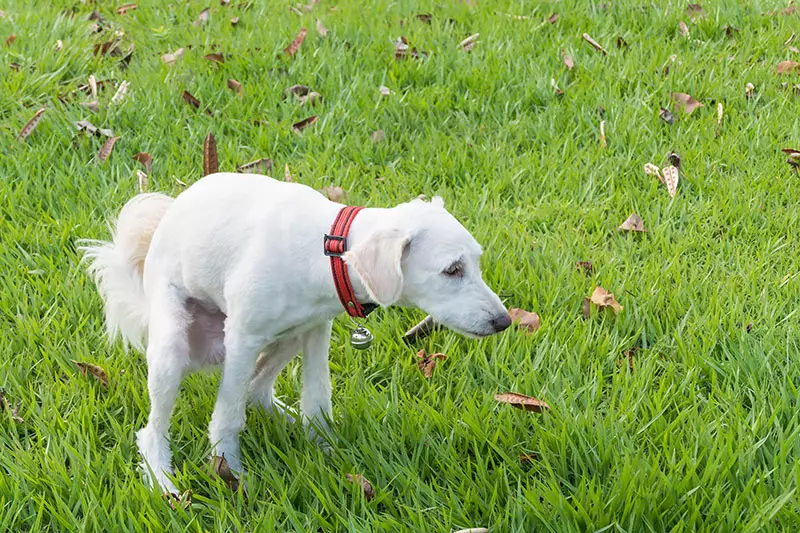
How is abnormal faeces in dogs and cats diagnosed?
Diagnosis will usually include a medical history, physical examination and microscopic faecal evaluation. It is important to take a fresh stool sample to your consultation; it will help the vet identify potential underlying causes for the abnormal faeces. The stool sample will be examined for blood, parasites, bacteria, and other indicators of the cause. In more serious cases, x-rays, ultrasound, and blood and urine tests may also be conducted. It is important to determine the cause so the appropriate treatment can be given.
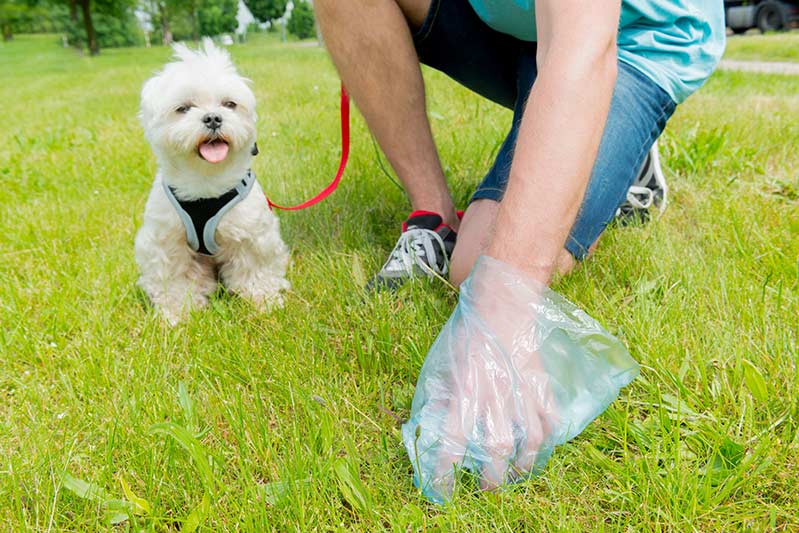
Medical history
The veterinarian will ask about the animal’s medical history including vaccinations, deworming treatments, contact with other dogs and cats, diet, access to garbage or toxins, and any medications. The more information the owner can provide, the easier it will be to make a diagnosis. A detailed account of the observed symptoms may help to narrow down the possible causes.
Physical examination
The veterinarian will perform a physical exam that may include measuring the animal’s temperature, checking the heart and respiration, looking in the mouth, palpating the abdomen, checking for dehydration and performing a rectal examination.
Laboratory and diagnostic tests
In almost all cases of diarrhoea, the veterinarian will recommend a faecal flotation, a routine veterinary test used to diagnose internal parasites or worms. If a bacterial infection is suspected, a faecal culture and sensitivity test are performed to determine what types of bacteria are present in the digestive tract. In cases of certain viral diseases, such as parvovirus, other tests of the faeces may aid in the diagnosis.
If the animal is showing generalised signs of illness, such as fever, vomiting and lethargy, a complete blood count and chemistry panel may be performed. Specialised blood tests may also be conducted if a particular disease is suspected. For certain diseases, the only way to make an accurate diagnosis is through microscopic examination of a biopsy (a piece of tissue or a sample of cells removed from the animal).
Diagnostic imaging
X-rays may be recommended if a tumour, foreign body, or anatomical problem is suspected. A barium study or ultrasound may also be recommended. Examinations using an endoscope or colonoscopy may be performed in certain cases.
Prognosis
Most healthy dogs and cats experience an occasional episode of loose stool or diarrhoea that resolves within 12 to 24 hours. The underlying cause in most of these cases is indiscriminate eating or stress. Diarrhoea associated with minor conditions usually has an excellent prognosis and can often be resolved quickly with simple treatments.
Diarrhoea that lasts for 24 to 48 hours usually has a good prognosis unless the animal is very young or elderly. But if diarrhoea continues for a longer period, dehydration can result, which can be dangerous. Even diarrhoea caused by mild illnesses may become serious if treatment is not initiated early enough to prevent severe fluid and nutrient losses. Any dog or cat can potentially become very ill from chronic bouts of diarrhoea.
Where diarrhoea is the result of serious or life-threatening illnesses such as organ system failure or cancer, the prognosis is less optimistic.
The prognosis for constipation is usually good, if treatment to alleviate the constipation is initiated promptly, because the longer faeces remains in the colon, the drier, harder and more difficult to eliminate they become. If obstipation – constipation that resists treatment – occurs, the colon becomes packed with an uncomfortably large amount of faeces, causing unproductive straining, lethargy and appetite loss. In cats, this can result in the swelling of the colon and permanent loss of the colon’s motility and a complete inability to defecate.
Treatment for abnormal faeces in dogs and cats
Treatment will be determined by the underlying cause for the abnormal faeces. Because there are many possible causes, there are a variety of treatment options available, most commonly involving medication or dietary management. It is important to provide only medications that have been recommended or prescribed by the veterinarian.
Dietary modification
In most cases of diarrhoea, it is usually recommended to withhold food for 12 to 24 hours to rest the intestinal tract, while frequently providing small amounts of water. Thereafter, small quantities of bland, easily digestible solids are given for a few days. As the stool normalises, the animal’s regular diet is slowly reintroduced by combining it with the special diet over a few days.
In cases of constipation, a veterinarian-approved diet to modify in the fibre content and/or quality of the animal’s diet may be recommended. For some animals, a high fibre diet is beneficial, but for others, a low fibre diet works better, depending on the cause of the constipation. Increasing the water content of the diet may also be recommended, by switching from dry food to canned food or by mixing a little water in with the food.
The vet may also recommend a special diet if the cause is a food allergy or intolerance, inflammatory bowel disease (IBD), or colitis. In such cases, a permanent modified diet may be advised, in order to improve digestibility, avoid certain ingredients, or increase or decrease fibre or fat content of the diet.
Medication
Deworming treatment will be prescribed if intestinal worms are present and in most cases it is necessary to repeat the treatment one or more times over several weeks or months. It is also important to try to remove the worm eggs from the environment.
Antibiotics will be prescribed if the diarrhoea is caused by bacteria. They may also be given if the intestine has been damaged and there is a chance that the injury could allow bacteria from the intestine into the blood stream, possibly causing serious disease (septicaemia).
In some cases, medications may be provided to decrease motility, i.e., slow down the rate at which the ingested material moves through the intestine. These drugs should not be given if the animal has ingested a toxin or has a bacterial infection, therefore it is essential to have an accurate diagnosis before using these drugs.
In some cases, medication to control inflammation may be prescribed. In cases of constipation, laxatives, enemas or medication to increase the contractile strength of the large intestine may be recommended.
Rehydration fluids
Severe or prolonged diarrhoea can lead to significant dehydration and metabolic disturbances. If the animal is dehydrated, Hospitalisation may be necessary in order to provide fluids intravenously or subcutaneously. Oral fluids are often inadequate in such cases because they pass through the body too quickly to be sufficiently absorbed.
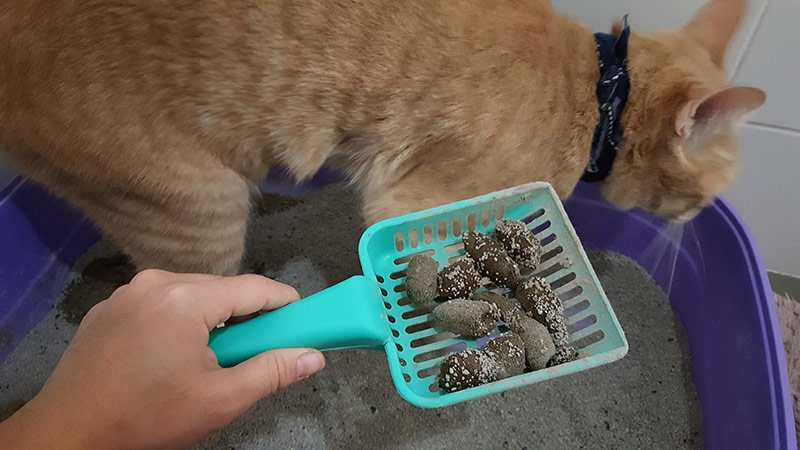
In summary
Abnormal faeces are a common occurrence in dogs and cats. Owners need to be aware of the normal appearance and frequency of their animal’s bowel movements, so that when a problem does occur, they will be alert to it. The appearance of the faeces includes four aspects: colour, consistency, content and coating. A variation in any one of these could indicate an underlying condition that needs to be addressed.
Abnormal faeces commonly take the form of diarrhoea or constipation. These conditions are frequently symptomatic of other, underlying conditions, such as digestive disorders, parasites, bacterial infections and dietary changes or sensitivities. Therefore, it is recommended to consult the vet if the abnormal faeces continue for more than a day or two or is recurring.
Appropriate treatment for abnormal faeces is determined by the diagnosis of the underlying cause. For example, deworming medication will be prescribed if worms are found, or dietary changes such as more or less fibre or fat if digestive issues are identified.
Bow Wow Meow Pet Insurance can help protect you and your pet should an unexpected trip to your vet occur.
- Find out more about our dog insurance options
- Find out more about our cat insurance options
- Get an instant online pet insurance quote





